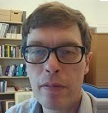7.11: Gauge Symmetries
( \newcommand{\kernel}{\mathrm{null}\,}\)
One of the things I will not say much about, but which needs to be mentioned, is of a certain class of local symmetries (i.e., symmetries of the theory at each point in space and time) called gauge symmetries. This is a key idea in almost all modern particle physics theories, so much so that they are usually labelled by the local symmetry group. Local symmetries are not directly observable, and do not have immediate consequences. They allow for a mathematically consistent and simple formulation of the theories, and in the end predict the particle that are exchanged – the gauge particles, as summarized in Table \PageIndex{1}.
| Force | graviton(?) |
|---|---|
| Gravitation | graviton(?) |
| QED | photon |
| Weak | W^\pm, Z^0 |
| Strong | gluons |


